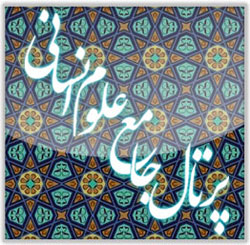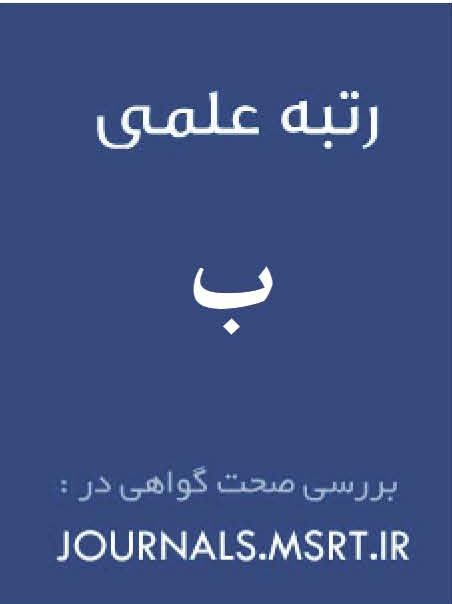Application of Roland Barthes’ Semiotics in the Meaning of Taqwa (A Case Study of Qur’an, Surah al-Hajj, Verse 37)
Keywords:
Holy Quran, Surah Hajj, Piety, Semiotics, Barth, Denotative MeaningAbstract
The topic of Hajj, as one of the most influential obligations in elevating individual and collective spirituality, has always attracted the attention of Muslims. The ritual of sacrifice (qurbānī), as one of the manifestations of worship in the pilgrimage, is a significant and constructive factor in nurturing the soul and fostering self-restraint against sins. God Almighty explicitly addresses this matter in Qur’an 22:37 (Surah al-Hajj), stating that neither the blood nor the flesh of the sacrificial animals reaches Him; rather, it is your taqwa (piety, God-consciousness) that reaches God (Qur’an, 22:37). Considering that the verses of the Qur’an, alongside their guiding function, can also be evaluated through linguistic and semiotic perspectives, this study reexamines Qur’an 22:37 — regarding taqwa in the context of Hajj — using Roland Barthes’ semiotic theory. The aim of this research is to determine the precise meaning of the word taqwa in this verse and to analyze its signification at two levels: denotative and connotative/mythical. By moving beyond the text through the linguistic context, syntagmatic sequence, and situational background of the verse, the study explores the pragmatic implications of the sign. The findings reveal that there is a logical relationship between the signifier (dāl) “taqwa” and its signified (madlūl), “al-wiqāyah” (self-protection), which leads to the implied meaning — God-consciousness — as the first (denotative) level of signification. At the second, mythical level of signification, the pre-Islamic Jāhiliyyah ideology of smearing the blood of sacrifices on the Ka‘bah sharply contrasts with the Islamic practice; the purpose of sacrifice in Islam is to increase the sacrificer’s taqwa and faith rather than material gain. Thus, the obligatory act of sacrifice in Hajj is inherently contingent upon taqwa; this interdependence demonstrates that the acceptability of a sacrifice depends on it being performed by a person characterized by taqwa.
Downloads
References
Allen, G. (2006). Roland Barthes (Translated by Payām Yazdānjū ed.). Markaz Publishing.
Alusi, M. (1994). Rūḥ al-Ma'ānī fī Tafsīr al-Qur'ān al-'Aẓīm (The Spirit of Meanings in the Exegesis of the Great Qur'an) (Edited by 'Alī 'Abd al-Bārī 'Aṭiyyah ed.). Dār al-Kutub al-'Ilmiyyah.
Barthes, R. (1977). Elements of Semiology (trans: Annette Lavers & Colin Smith ed.). Hill & Wang Pub.
Faḍl Allāh, M. Ḥ. (1998). Tafsīr min Waḥy al-Qur'ān (Exegesis from the Revelation of the Qur'an). Dār al-Malāk lil-Ṭibā'ah wa al-Nashr.
Ibn Kathīr, I. ī. i. A. (1998). Tafsīr al-Qur'ān al-'Aẓīm (Exegesis of the Great Qur'an). Dār al-Kutub al-'Ilmiyyah, Manshūrāt Muḥammad 'Alī Bayḍūn.
Izutsu, T. (1999). Mafāhīm-e Akhlāqi-Dīni dar Qur'ān-e Majīd (Ethico-Religious Concepts in the Holy Qur'an) (Translated by Fereydoun Badre'i ed.). Farzan Publishing.
Javadi Amoli, A. (2020). Tafsīr-e Tasnīm (Tasnim Exegesis) (Vol. 57). Isrā' Publishing.
Kaelan, M. S. (2020). Filsafat Bahasa Semiotika dan Hermeneutika. PARADIGMA.
Lyons, J. (2004). Muqaddameh'i bar Ma'nāšenāsi-ye Zabānšenāxti (An Introduction to Linguistic Semantics) (Translated by Ḥusayn Vāleh ed.). Gām-e Now.
Makārim Shīrāzī, N. (1995). Tafsīr-e Nemūneh (The Exemplary Exegesis). Dār al-Kutub al-Islāmiyyah.
Makaryk, I. R. (2009). Dāneš-nāmeh Nazariyehā-ye Adabi-ye Mo'āser (Encyclopedia of Contemporary Literary Theories) (Translated by Mehrāj Muhājir and Muḥammad Nabavī. 5th ed.). Āgah Publishing.
Muṭaharī, M. (1989). Deh Goftār (Ten Discourses). Ṣadrā Publications.
Naraqī, M. A. Me'rāj al-Sa'ādah (The Ascent of Felicity). Mūsā 'Ilmī Bookstore.
Ott, B. L., & Mack, R. L. (2010). Critical Media Studies: an Introduction. [Journal Name Not Provided], 6(4), 257-276.
Qā'imī, A. (2007). Nizām-e Ḥayāt-e Khānevādeh dar Islām (The System of Family Life in Islam). Anjoman-e Awliyā' va Murabbiyān Publications.
Rāghib Iṣfahānī, Ḥ. i. M. Al-Mufradāt fī Gharīb al-Qur'ān (The Singular Words in the Strange Terms of the Qur'an) (Edited by Ṣafwān 'Adnān Dāwūdī ed.). Dar al-ʻIlm, Dār al-Shāmiyyah.
Rezaei Esfahani, M. A. (2007). Pazhuheshi dar I'jāz-e 'Ilmi-ye Qur'an (A Study in the Scientific Miraculousness of the Quran). Research on Quranic Exegesis and Sciences.
Sha'rāwī, M. M. (1997). Tafsīr al-Sha'rāwī (The Sha'rāwī Exegesis). Akhbār al-Yawm; Idārat al-Kutub wa al-Maktabāt.
Ṭabāṭabā'ī, M. Ḥ. (1996). Al-Mīzān fī Tafsīr al-Qur'ān (The Balance in Quranic Exegesis). Islamic Publications Office of the Seminary Teachers Society.
Ṭarīḥī, F. a.-D. (1996). Majma' al-Baḥrayn (The Confluence of the Two Seas) (Edited by Aḥmad Ḥusaynī. 3rd ed.). Mortazavī Bookstore.
Ṭūsī, M. i. a.-Ḥ. (1993). al-Amālī (The Dictations) (Edited by Mu'assasat al-Bi'that ed.). Dār al-Thaqāfah.
Downloads
Published
Submitted
Revised
Accepted
Issue
Section
License
Copyright (c) 2025 Fariborz Ahmadinezhad

This work is licensed under a Creative Commons Attribution-NonCommercial 4.0 International License.







